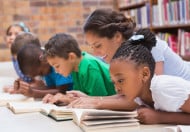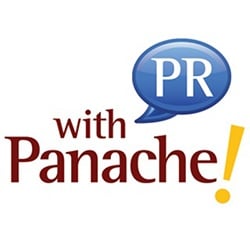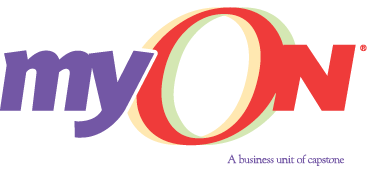 In Weslaco Independent School District weserve a mobile population of 17,500 students at 18 schools. Our students are 98.5% Hispanic, 86% economically disadvantaged and 30% migrant. About 30% of Weslaco students are English Language Learners (ELLs). One of the ways we are preparing these kids for college and careers is by creating a community of readers. These six best practices have worked in our district, and I hope they spark ideas that you can use in yours.
In Weslaco Independent School District weserve a mobile population of 17,500 students at 18 schools. Our students are 98.5% Hispanic, 86% economically disadvantaged and 30% migrant. About 30% of Weslaco students are English Language Learners (ELLs). One of the ways we are preparing these kids for college and careers is by creating a community of readers. These six best practices have worked in our district, and I hope they spark ideas that you can use in yours.
1) Have a strong focus on early learning and early literacy. About 2 1/2 years ago, the district started using myON for K-8 reading, and then we worked with the company to launch an initiative called “Zero to Three: Weslaco Reads,” so kids who are 0–3 can download and read books. The program highlights and pronounces words, and you can change the speed of reading so young kids can get started at their own pace.
2) Get parents involved. We have witnessed parents who didn’t speak English start using the same books as their kids to learn the language. Studies show that children who succeed in school should hear 21,000 words a day, so we encourage our parents to talk to their children as much as possible and to encourage them to use complete sentences. If they want a glass of milk, we want them to say, “Mom, I want a glass of milk.”
3) Collaborate with the community. This year, we formed a partnership with Head Start to help 3- and 4-year-olds who are economically disadvantaged and have challenges. Weslaco early childhood teachers go to Head Start locations and teach there for half a day, every day. So when these kids come into public schools they’ll already be reading. We are looking at extending this program to 2-year-olds, and we want to provide curriculum to kids as young as 1.
Our entire community is working together to keep our students reading. Our local public library gives kids somewhere to read when they are not in school, and we help them with staffing issues by having school librarians work in the public libraries when needed. This also means that students who go to the public library see familiar faces. The libraries have Family Literacy Night in fall and spring. Students bring their parents at night to show them the work they are doing. Kids can buy books, and parents are eager to buy books for them.
We also have a partnership in the works with a local hospital. We want to put posters and pushcards in pediatricians’ and obstetricians’ offices, showing how anybody can log onto myON using any mobile device.
4) Provide as much connectivity as possible. The more access to the Internet students have the greater the development of literacy is going to be, so we are working with businesses and the city to reach our goal of providing connectivity to 100% of our students. When he heard our plans, our mayor said that he wanted to help provide connectivity not just within the city, but to all of our remotest students who live outside the city limits as well. We are partnering with vendors to get the infrastructure for free. We are looking at towers with a range of 18 miles.
We want everyone to have access because, when students access the internet, their understanding will depend on how much literacy development they’ve had and how early they were exposed to it. Also, we have students and parents who speak English, Spanish and a mixture I call Tex-Mex. Students who speak Tex-Mex don’t learn proper English or proper Spanish, and our hope is that giving them 24/7, anytime, anywhere access to digital or printed reading materials will give them the push they need to learn both languages correctly.
5) Keep kids reading, even when they’re not in school. We have reading and writing camps during Christmas, spring and summer breaks. Kids can go to the library and download books to read for free. We have a competition called the Millionaire Club, which pushes kids to read a million words. Over last Christmas break, we had one little girl who read 40 books. We also have writing competitions to get students writing for pleasure and to prepare for state assessments.
6) Get everyone on the same page–literally. My next plan is to do a spin-off of the national One City One Book day. On the birthday of our community next December, I want to do “Weslaco Reads One Book,” where everyone in town uses myON to download a book called VIPs of the Barrio, which was written by our former mayor. This will give us a focal point for a roundtable discussion where students can learn about the birth of the community, and will inspire them to read other historical books.
We are doing everything we can to keep not just our students but all the residents of Weslaco reading. We want them to develop vocabulary and comprehension of science, math, and social studies terms. We want our kids to be CEOs, so we’re starting to build their literacy from birth.
This blog is part of the Supporting English Language Learners Series with support from The Bill & Melinda Gates Foundation. For more, stay tuned for the culminating podcast, infographic and publication.
For more, see:
- Why PD for ELL Educators Matters
- 5 Best Practices for Supporting Refugee ELL Students
- Next-Gen Personalized Learning for ELL Students
Dr. Ruben Alejandro is a 1972 graduate of Weslaco High School. Since 1977, he has worked for Weslaco ISD in positions including chemistry and biology teacher, district technology curriculum coordinator, federal programs director, assistant superintendent and deputy superintendent. He was named superintendent of schools in 2012.


